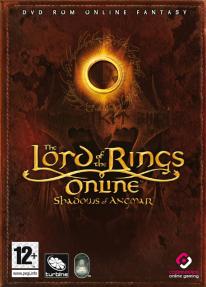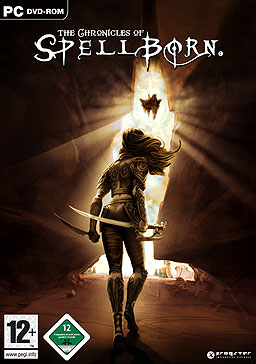
EverQuest is a 3D fantasy-themed massively multiplayer online role-playing game (MMORPG) originally developed by Verant Interactive and 989 Studios for Windows PCs. It was released by Sony Online Entertainment in March 1999 in North America, and by Ubisoft in Europe in April 2000. A dedicated version for Mac OS X was released in June 2003, which operated for ten years before being shut down in November 2013. In June 2000, Verant Interactive was absorbed into Sony Online Entertainment, who took over full development and publishing duties of the title. Later, in February 2015, SOE's parent corporation, Sony Computer Entertainment, sold the studio to investment company Columbus Nova and it was rebranded as Daybreak Game Company, which continues to develop and publish EverQuest.
A multi-user dungeon, also known as a multi-user dimension or multi-user domain, is a multiplayer real-time virtual world, usually text-based or storyboarded. MUDs combine elements of role-playing games, hack and slash, player versus player, interactive fiction, and online chat. Players can read or view descriptions of rooms, objects, other players, and non-player characters, and perform actions in the virtual world that are typically also described. Players typically interact with each other and the world by typing commands that resemble a natural language, as well as using a character typically called an avatar.
A massively multiplayer online role-playing game (MMORPG) is a video game that combines aspects of a role-playing video game and a massively multiplayer online game.

World of Warcraft (WoW) is a massively multiplayer online role-playing game (MMORPG) released in 2004 by Blizzard Entertainment. Set in the Warcraft fantasy universe, World of Warcraft takes place within the world of Azeroth, approximately four years after the events of the previous game in the series, Warcraft III: The Frozen Throne. The game was announced in 2001, and was released for the 10th anniversary of the Warcraft franchise on November 23, 2004. Since launch, World of Warcraft has had nine major expansion packs: The Burning Crusade (2007), Wrath of the Lich King (2008), Cataclysm (2010), Mists of Pandaria (2012), Warlords of Draenor (2014), Legion (2016), Battle for Azeroth (2018), Shadowlands (2020), and Dragonflight (2022). Three further expansions, The War Within (2024), Midnight, and The Last Titan, were announced in 2023.
A massively multiplayer online game is an online video game with a large number of players on the same server. MMOs usually feature a huge, persistent open world, although there are games that differ. These games can be found for most network-capable platforms, including the personal computer, video game console, or smartphones and other mobile devices.
Player versus player (PVP) is a type of multiplayer interactive conflict within a game between human players. This is often compared to player versus environment (PvE), in which the game itself controls its players' opponents. The terms are most often used in games where both activities exist, particularly MMORPGs, MUDs, and other role-playing video games, to distinguish between gamemodes. PvP can be broadly used to describe any game, or aspect of a game, where players compete against each other. PvP is often controversial when used in role-playing games. In most cases, there are vast differences in abilities between players. PvP can even encourage experienced players to immediately attack and kill inexperienced players. PvP is often referred to as player killing in the cases of games which contain, but do not focus on, such interaction.

Furcadia is a free-to-play MMOSG/MMORPG or graphical MUD, set in a fantasy world inhabited by magical creatures. The game is based on user-created content with emphasis on world building tools, exploring, socializing, and free-form roleplaying. Furcadia hosts a large volunteer program called the Beekin Helpers, allowing players to help with community moderation, welcoming new players, handling in-game technical support, running in game events, creating art for the game itself, accessing and updating the game's website, and bug hunting. Furcadia holds the Guinness World Records title for the longest continuously running social MMORPG and, in addition to being one of the first games to heavily encourage modding and let users build virtual worlds for themselves, it was also one of the first freemium online games. In 2008, Furcadia was reported as having over 60,000 players.
Guild Wars is an online role-playing game franchise developed by ArenaNet and published by NCSoft. The games were critically well received and won many editor's choice awards, as well as awards such as "Massively Multiplayer/Persistent World Game of the Year" by the Academy of Interactive Arts & Sciences, as well as Best Value, Best Massively Multiplayer Online Role-Playing Game (MMORPG), and Best Game. Guild Wars was noted for being the "first major MMO to adopt a business model not based on monthly subscription fees", its instanced approach to gameplay, and the quality of the graphics and play for computers with low specifications. In April 2009, NCSoft announced that 6 million units of games in the Guild Wars series had been sold. The sequel and fourth major entry into the series, Guild Wars 2, was announced in March 2007 and released on August 28, 2012. It features updated graphics and gameplay mechanics, and continues the original Guild Wars tradition of no subscription fees. The Guild Wars series had sold 11.5 million copies by August 2015
Scott Jennings, also known as Lum the Mad, is an American commentator on MMORPG games. He is best known for creating a website, The Rantings of Lum The Mad, a pioneer blog, which existed from 1998 to 2001, when Jennings was hired by MMO developer Mythic Entertainment, where he remained until 2006.

Meridian 59 is a 1996 video game developed by Archetype Interactive and published by The 3DO Company. It was the first 3D graphical massively multiplayer online role-playing game (MMORPG) and one of the longest running original online role-playing games. The development team included John Hanke, who later founded Niantic, Inc. and codeveloped Google Earth and Pokémon Go.

Vanguard: Saga of Heroes was a high fantasy-themed massively multiplayer online role-playing game (MMORPG) developed by Sigil Games Online and published by Sony Online Entertainment (SOE). The game was released on January 30, 2007 and initially sold around 242,000 copies, while the number of active subscriptions was estimated to be around 130,000, to drop in the next months to about 40,000. In May 2007, Sony Online Entertainment acquired key assets from Sigil Games Online, including all rights to Vanguard.

The Lord of the Rings Online is a massively multiplayer online role-playing game (MMORPG) for Microsoft Windows and OS X set in J. R. R. Tolkien's Middle-earth, taking place during the time period of The Lord of the Rings. Originally developed by Turbine, the game launched in North America, Australia, Japan, and Europe in April 2007 as The Lord of the Rings Online: Shadows of Angmar. Players could create characters of four races and seven classes and adventure throughout the region of Eriador. In November 2008, the Mines of Moria expansion was released, adding the region of Moria and two new playable classes. It was followed by the Siege of Mirkwood in December 2009. In 2010 the game underwent a shift from its original subscription-based payment model to being free-to-play.

Age of Conan: Unchained is a fantasy-themed massively multiplayer online role-playing game (MMORPG) developed by Funcom and published by Eidos Interactive for Microsoft Windows in 2008. Age of Conan is the first installment in the planned Age of Conan series. Age of Conan takes place within the continent of the Hyborian kingdoms, a year after the events depicted in Robert E. Howard's Conan novel The Hour of the Dragon.

Dungeons & Dragons Online is a massively multiplayer online role-playing game (MMORPG) developed by Turbine for Microsoft Windows and OS X. The game was originally marketed as Dungeons & Dragons Online: Stormreach. Upon switching to a hybrid free-to-play model it was renamed Dungeons & Dragons Online: Eberron Unlimited. The game was rebranded Dungeons & Dragons Online, with the introduction of Forgotten Realms-related content. Turbine developed Dungeons & Dragons Online as an online adaptation of Dungeons & Dragons (D&D), originally based loosely on the D&D 3.5 rule set. The game is set on the unexplored continent of Xen'drik within the Eberron campaign setting, and in the Kingdom of Cormyr within the Forgotten Realms campaign setting.
Dragon's Gate was an interactive, real time, text-based multi user online fantasy role-playing game, sometimes referred to as a MUD. It was one of the longest running pay-for-play online games in the world, it opened to the public in the spring of 1990 on GEnie. In 1996 the game was moved to AOL. Later the game was moved to Mythic Realms, and finally to independent server, where it ran until the summer of 2007.
The history of massively multiplayer online games spans over thirty years and hundreds of massively multiplayer online games (MMOG) titles. The origin and influence on MMO games stems from MUDs, Dungeons & Dragons (D&D) and earlier social games.

The Chronicles of Spellborn was a massively multiplayer online role-playing game (MMORPG) initially released on November 27, 2008, developed by Spellborn International and distributed by Frogster Interactive, Mindscape and Acclaim Games; set in a post-apocalyptic fantasy world. Spellborn used the Unreal Engine, featured a European Art approach and contained notable contributions from Jesper Kyd. In August 2010, the game was shut down. As of 2019, the game is still played on a proprietary private server that is operated by a former developer.
Kunlun Group or their alternative name KoramGame, is a Hong Kong software developer and publisher.

David Allen is a video game designer and entrepreneur who is most recently known as the creator of Alganon, a fantasy based MMORPG developed by Quest Online, a company he co-founded in 2006.










